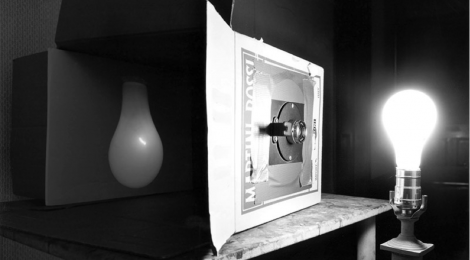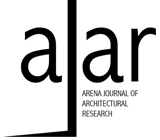
DR_SoM Dublin 2017-Dec-1-2
POSTPONED – The limited number of submissions we received would not allow us to reach the critical mass of speakers and the consistency and quality we would like to achieve in order to make it a valuable event for participants. Therefore we decided to cancel the session of 1-2 December, and postpone the event. We will keep you informed about future developments.
Session 6: Camera as Medium and Method of Design
On architectural research questions, and how photography can address them
UCD Dublin, Ireland
1-2 December 2017
Postponed – new date will be announced soon!
KEYNOTE SPEAKER: PHILIPP SCHAERER, EPFL
(see http://www.philippschaerer.ch/)
EXTENDED DEADLINE: 9 OCTOBER 2017
Download the Announcement as PDF.
The ARENA DR_SoM groups architects and architectural design researchers to share with peers their experiences. This will not be done in a theoretical way, but based instead on the presentation of current design and research work. A Scientific Committee will select 10-15 proposals for presentation at the event.
25 September 2017: Abstract submissions
ABSTRACT SUBMISSION – EXTENDED DEADLINE : 9 OCTOBER 2017
13 October 2017: Notification of Acceptance: 16 October 2017
The sixth session of DR_SoM (Design Research Series on Method) will take place at the School of Architecture, Planning and Environmental Policy, University College Dublin, Ireland. Rather than looking for theoretical contributions about the relationship between photography and architectural design, we are looking for researchers and inquiring practitioners who actively engage with photography as a medium for exploration and design. There is a significant body of research relating to the depiction of architecture and of cities through photography. In this formulation, photography is thought of as a medium that comes after architecture – it documents results more than it contributes to the process itself. And yet, the camera and the photographic image can undoubtedly be used at every stage and every scale of the architectural process. There are many contemporary examples of this – from the collaborations of Philip Schaerer with Markus Boltshauser or Bas Princen with KGDVS – as well as historic antecedents (the Smithsons’ use of Nigel Hamilton’s photographs, for instance). With due regard to this lineage, we would like to look at current activity in this territory. Areas to consider might include the following:
Cameras and lens-based technologies play an increasing role in the survey and documentation of sites. How might the images and data produced begin to play an active role in the development of design strategies? How can the camera and photograph assist in the consideration of questions of material, construction and making? Its capacity for detailed, scrupulous seeing is relatively rarely deployed in the exploration of surfaces and textures or in the qualities of mass and density.
How can found and borrowed photographs serve as prompts and aids to the design process? How might particular aesthetics, compositional strategies, spatial configurations on the one hand, or social, cultural and political sensibilities on the other hand, serve to inform an approach to making architecture?
How might the camera’s established capacities to render space and form be used in evolving an architectural design? For instance, the use of photographs of large models as design tools has become quite widespread both within schools and in practice. But perhaps there are other less laborious, more speedy means of registering the qualities of an emerging design through camerawork?
The inherent relationship of the device of the camera – a shut room with a single aperture – and architectural space is often rehearsed. But how might this fundamental reciprocity manifest itself in a design process or a finished project?
Prompted by such considerations, and open to others, this symposium will aim to open up new perspectives and generate useful discussion on photography as the medium and the method for exploration within architectural design and research.
Proposals, registration, publication
The DR_SoM seminar at Dublin will take place on Friday 1 and Saturday 2 December 2017. There will be no parallel sessions. There is no registration fee; however, the number of participants will be limited to 30, of whom a maximum of 10 to 15 researchers can present their research. For each presentation, a timeslot of about 40’ provides plenty of time for presentation and discussion. Discussions will be held as a round-table debate.
Candidates who wish to present their research send an abstract of no more than 250 words, (and any additional graphic material, if required) in pdf to johan.dewalsche@uantwerpen.be before Monday 25 September 2017. Selections will be made by the scientific committee, and communicated on 13 October 2017. As far as the number of participants allow, researchers and practitioners can join the session and contribute to the debate without presenting; please contact johan.dewalsche@uantwerpen.be.
Full papers are not required as we recognize work in progress. On the contrary, participants are invited to write an illustrated paper afterwards. The accepted papers will be published as an ARENA open-access on-line publication, with a print-on-demand option, as part of the DR_SoM series (with ISBN and ISSN number) by BK Books Delft. For the first issue of this series, take a look at:
http://www.arena-architecture.eu/publications/dr_som-01-prototypes-and-paradigms/
For any questions related to content of this, the sixth DR_SoM session in Dublin, please contact Hugh Campbell at hugh.campbell@ucd.ie for any questions related to practicalities and organisation please contact Dervla MacManus at dearbhlamacmanus@gmail.com. For any questions on the project of DR_SoM in general, contact Johan De Walsche at johan.dewalsche@uantwerpen.be.
Provisional time schedule
Friday 1 December 2017
13.30 Session 1 (3 presentations)
16.00 session 2 (3 presentations)
19.30 Dinner (to be paid by participants)
Saturday 2 December 2017
9.00 Session 3 (3 presentations)
11:30 session 4 (3 short presentations)
13.00 closing drink
Practicalities
ORGANISATION AND VENUE
UCD School of Architecture, Planning and Environmental Policy
College of Engineering and Architecture
University College Dublin
Richview, Clonskeagh, Dublin
Please note the School of Architecture is not located in the main university campus known as Belfield, it is located adjacent to Belfield at Richview, near Clonskeagh.
Dervla MacManus: Tel.+353 86 347 0234
ACCOMODATION
Richview is located in the residential suburb of Clonskeagh, consequently there are few hotels within walking distance. Attendees may wish to stay in the city centre where there are many hotels to choose from and take the number 11 bus or taxi (15-20 mins) to the school. There are two hotels overlooking the Grand canal located on the edge of the city centre which would also be convenient:
Hilton Dublin, Charlemont Place, is located close to the Luas (tram) stop Charlemont which serves the city centre.
Mespil Hotel, 50-60 Mespil Road, http://www.mespilhotel.com/
Alternatively, the area of Donnybrook is about a 25 minute-walk from Richview, and is also served by an Air Coach bus service to and from Dublin airport.
Hampton Hotel, 19 – 29 Morehampton Road, http://www.hamptonhotel.ie/
Morehampton Townhouse B&B, 78 Morehampton Road, http://www.morehamptontownhouse.com/
MEALS
We have no budget for the event, and hence the dinner on Day One will be taken outside at the expense of participants. All participants are invited for a Conference meal on the Thursday evening, with advance reservations, and to be paid for by participants (40€).
UCD will provide coffee, tea and snacks at mid-afternoon, and the mid-morning breaks.
TRAVEL to Dublin
Most international travellers will arrive in Ireland via Dublin airport. To get from the airport to the city centre it is easiest to get a taxi or a bus to the city centre. The Air Coach bus service is an express bus serving many parts of the city including the city centre. Ask the operator at the Air Coach stand outside the arrivals area which bus to get on. (Look out for big blue buses)
about the DR_SoM project
Design research, a large umbrella
In design research the research process is highly typified by the role and position of the act of designing, by the design proposal (an object, a building, an urban project, a landscape), by the specific capacities and fascinations of the researcher, by the profile of stakeholders, by the audience, by the research environment, by contextual references, and by the mutual interaction of these factors. As a result, architectural design research acts as a large umbrella, covering multiple approaches and addressing distinct audiences.
Design Research, Series on Method
After some decades of experimentation and ontological dissent, design research has come of age. At the same time, due to the amount of parameters, paradigms and perspectives that directs its conduct, design research is a multiple concept, a catch-all term in need of clarification and discrimination.
‘Design Research, Series on Method’ (DR_SOM) consists of a series of research seminars and workshops, based on the rationale that discerning common and distinctive features in the broad scope of approaches covered by the epithet “design research”, will contribute to a better understanding of its specific capacities. The identification of particularities and coherence between themes, tools, strategies and discourse will be helpful to be more precise in writing research proposals, to allow for identifying appropriate peers, resulting in a more accurate assessment of the outcome, and, eventually, to inspire future endeavours. At last, a better comprehension of design research as an academic field and culture will contribute to a better communication, interaction and exchange with other research disciplines and communities. It will reveal its capability for inter- and trans-disciplinary research, and its capacity for offering new approaches to pending issues.
The seminars
In each meeting, DR_SOM sequentially focuses on a specific approach, and looks for common ground and distinctive qualities and conditions. It is a two day event consisting of workshops where early stage PhD design researchers, selected on either representativeness or originality in approach towards the theme, interact with a panel of senior researchers and an audience of peers. There are no parallel sessions, the number of participants is limited to 30 persons, discussing 10 to 15 projects.
DR_SoM is a project within the ARENA network for architectural research.
For this session, the DR_SoM scientific committee consists of :
Hugh Campbell, UCD (organiser and host)
Johan De Walsche, UAntwerpen (project leader);
Oya Atalay Franck, ZHAW Winterthur (project leader);
Roberto Cavallo, TUDelft;
Murray Fraser, UCL Bartlett;
Bernard Kormoss, ULG Liège;
Flora Samuel, SoA Reading;
João Sequeira, CICANT/CHAIA Lisbon;
Pieter Versteegh, ESA‐PSYCHE

